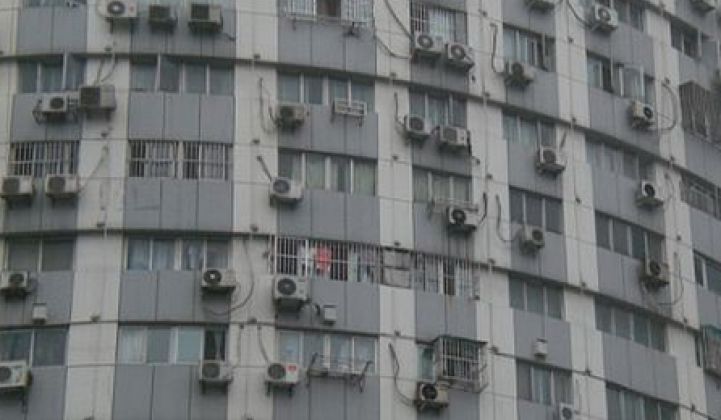America used to be the king of car sales, but China took that crown in 2009. America also used to be the world's biggest polluter, but China now has that dubious distinction as well.
Now China -- along with India, Indonesia, Pakistan, Bangladesh and the Philippines -- could be set to surpass the U.S. in air conditioning use. By a lot.
The U.S. uses more air conditioning than all other countries combined. But according to a new study from Michael Sivak, a research professor at the University of Michigan, eight developing countries (including the six Asian countries previously listed) could eventually put the U.S. to shame when it comes to air conditioning use.
Sivak developed an index for cooling demand by looking at mean daily outdoor temperatures and factoring those with population figures and distribution. He then normalized the index with U.S. values. The result is a projection for air conditioning usage if it were as widely used as it is in America:

If the rest of the world caught up with the U.S., the 169 countries surveyed by Sivak could represent demand 45 times greater than current U.S. demand. If every country in the world were factored in, demand could be more than 50 times greater than in America.
"It is clear that the global energy demand for air-conditioning will grow substantially as nations become more affluent, with the consequences of climate change potentially accelerating the demand. This trend will put additional strain not only on global energy resources but also on the environmental prospects of a warming planet," wrote Sivak.
Sivak isn't making a prediction about when this spike in demand will happen. He's only projecting what would happen if countries adopted American standards of cooling. But he points out some notable trends. In India, the country with the highest potential usage spike, air conditioning sales are increasing by 20 percent each year. And in China, 50 million air conditioning units were sold in 2010.
Two other researchers at the Netherlands Environmental Assessment Agency projected that global warming could increase cooling demand by 72 percent by the end of the century.
In June, the International Energy Agency issued a report calling for basic efficiency standards for appliances, motors and air conditioning units in developing countries, concluding that these simple measures could account for half the carbon emissions reductions needed to stabilize global temperature rise at two degrees Celsius by mid-century.



